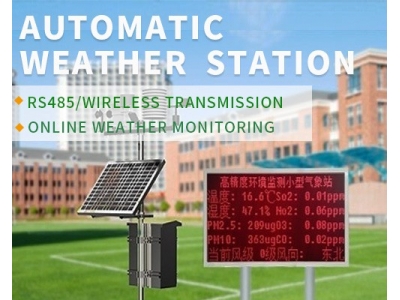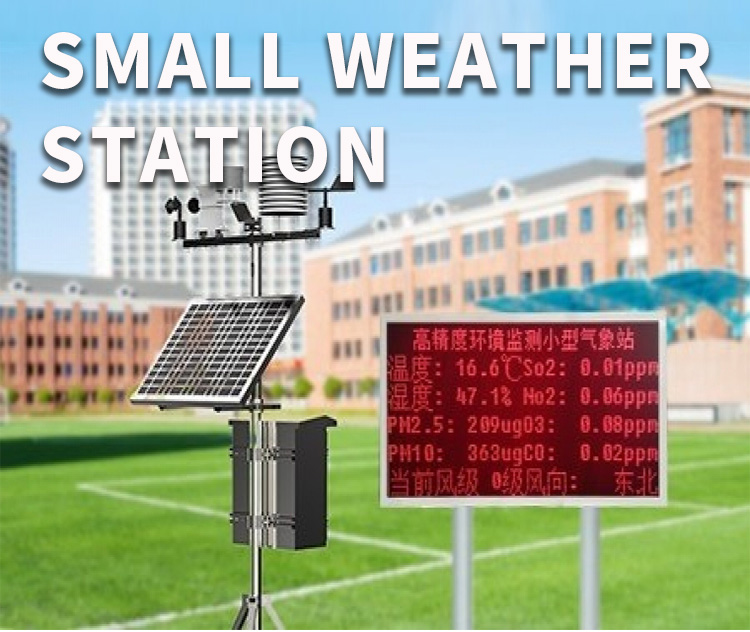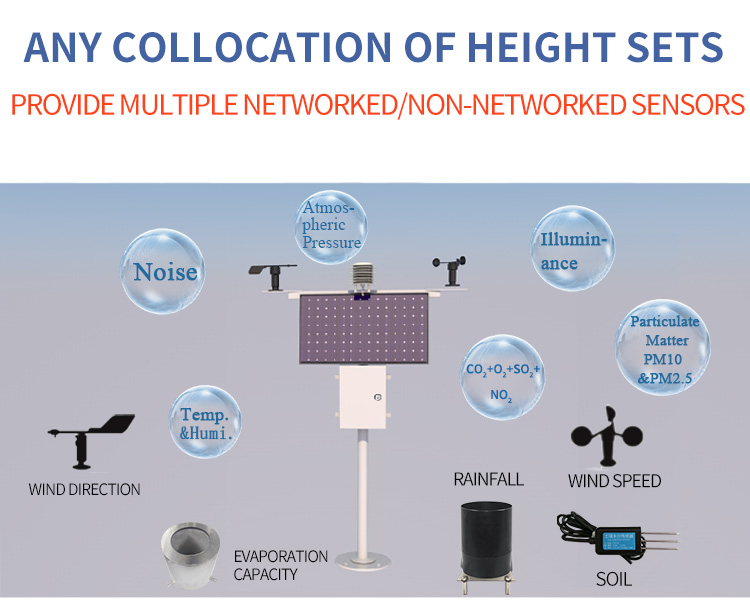
Automatic Weather Stations (AWS) For Farms And Agriculture
Monitoring local weather conditions through automatic weather stations can help to take corrective or remedial actions to minimize losses due to changing conditions.

Monitoring local weather conditions through automatic weather stations can help to take corrective or remedial actions to minimize losses due to changing conditions.
The yield of crops depends greatly on local climatic conditions. With the exception of a few crops grown in greenhouses or controlled environments, most agricultural activities are closely linked to climatic conditions. While it is very difficult to control the weather outside, monitoring local weather conditions through automatic weather stations can help to take corrective or remedial actions to minimize losses due to changing conditions.

Initially done in a crude and manual way, weather monitoring has evolved over the years. Automatic weather stations (AWS) have completely transformed the way we monitor local weather today. The invention of automatic weather stations drastically simplified the process of documenting and analyzing the weather data. Using AWS we can monitor weather conditions remotely and also analyze the weather over longer periods of time, helping generate accurate weather forecasts.
An automatic weather station is an assembly of various sensors to monitor various environmental parameters coupled with a data logger and radio transmitter to record and transmit this data to some terminal equipment like PC or Server, where it may be stored, accessed and analyzed.
Typical sensors used in a weather station are,
Air temperature
Humidity
Wind direction and speed (Anemometer)
Barometric pressure
Global radiation and radiation balance (Pyranometer)
Precipitation / Rain
Soil temperature
Soil humidity and evaporation
The actual selection of sensors depends on the climatic conditions, soil conditions, and type of crop for which the weather station is to be used. Here is a detailed article describing various components of an automatic weather station.

Over the years, agriculture is becoming more advanced, more scientific and more competitive an activity. Farming is a high stake high reward activity. Progressive farmers are relying more and more on data to make informed decisions and mitigate unforeseen risks.
Weather station plays a particularly important role in the cultivation of cash crops like grapes, potatoes, tea, coffee etc. Individual farmers and farming corporations are increasingly employing Automatic weather stations for some of the following benefits,
– Determining whether a particular region is ideal to grow a specific crop.
– Safeguarding the crop against adverse environmental conditions such as hail, excess or deficient rain.
– Helping anticipate weather conditions that may aggravate plant diseases or lead to pest and insect intrusion.
Information from weather station is also used for research to improve/optimize corp irrigation patterns, pest control models ultimately improving the quality of the crop. Monitoring soil moisture and temperature and maintaining these parameters at the correct levels is crucial for cash crops which have short harvest cycles.
Spraying is equally crucial but is a costly activity particularly for individual cultivators. Farms need to be sprayed periodically for pests and insects. Lack of spraying results in low productivity and also affects the quality and visual appearance of produce marring the rate that it gets in the market. Data about temperature and wind speeds can help to find out right timing to spray pesticides on the crop. Choosing a wrong timing can significantly increase the consumption of the pesticide and the labor time spent.
For the crops like tea, coffee, and other crops grown in the hilly regions, weather parameters can be drastically different in the different patches due to a different altitude, soil quality, and land slope. Installing multiple automatic weather stations is a must in such scenarios to track the ‘micro-climates’ in different parts.
Agricultural or crop insurance in countries such as India is a big market and companies rely on the data from automatic weather stations in order to settle or refuse the claims by farmers.